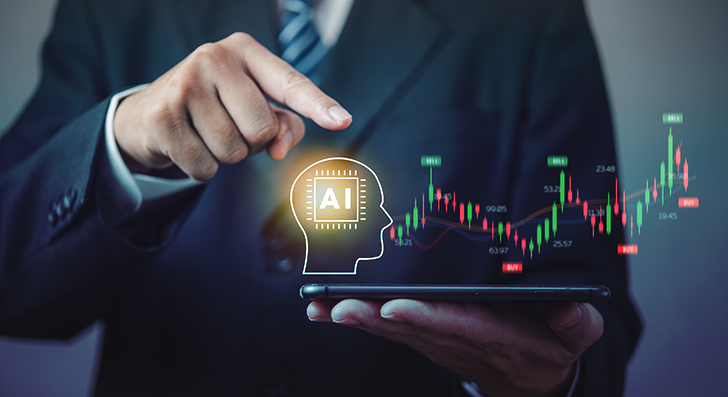As a crypto journalist who’s covered everything from the 2017 ICO boom to the latest DeFi meltdowns, I’ve seen the market evolve from a wild west of speculation into a sophisticated arena where tech like AI is reshaping the game. What started as a fringe experiment in digital money has ballooned into a multi-trillion-dollar ecosystem, complete with its own set of headaches—like extreme volatility and psychological traps that can wreck even seasoned traders. Enter AI-generated crypto signals: these aren’t just buzzwords; they’re tools that promise to cut through the noise, offering data-driven insights that were once the domain of high-frequency trading desks. But as with any innovation in this space, they come with upsides and some serious caveats. In this piece, we’ll break down how AI crafts these signals, weigh the pros and cons, and peek at what’s next—drawing on real-world trends and community chatter to give you the full picture.
The Rise of AI in Crypto Signals
Gone are the days when traders hunched over charts, fueled by coffee and gut instinct. AI has flipped the script, automating the grunt work of market analysis and spitting out buy/sell recommendations in real time. Think of it as a tireless co-pilot: algorithms sift through mountains of data—from exchange order books and historical prices to social media buzz on platforms like Twitter (now X) and Reddit—to spot opportunities humans might miss.
At its core, AI crypto signals leverage machine learning models trained on vast datasets. They crunch numbers on price patterns, trading volumes, and even macroeconomic indicators like interest rate shifts from the Fed. For instance, during the 2022 bear market, tools like those from platforms such as TradingView or specialized bots on Binance integrated AI to flag rebound signals amid the chaos of FTX’s collapse. This isn’t magic; it’s pattern recognition on steroids, allowing traders to act swiftly without the emotional baggage that often leads to FOMO buys or panic sells.
What makes this tech so appealing? It democratizes access. Retail traders, who make up a huge chunk of the crypto community, can now tap into strategies once reserved for hedge funds. But let’s not kid ourselves—AI isn’t infallible. It’s only as good as its inputs, and in a market rife with memes and manipulation, that’s a big “if.”
How AI Generates and Implements Signals
The process starts with data ingestion. AI systems pull from diverse sources: live feeds from exchanges like Coinbase or Kraken, sentiment analysis from crypto forums, and even global news APIs tracking events like regulatory crackdowns in China or ETF approvals in the U.S. Advanced models, often powered by neural networks, process this firehose of info to identify trends—say, a sudden spike in Bitcoin dominance signaling an altcoin dip.
Once patterns emerge, the AI generates a signal: “Buy ETH at $2,500” or “Sell SOL if it drops below $150.” Some platforms, like those using APIs from 3Commas or Pionex, go further by automating the execution, placing trades via connected wallets. This hands-off approach is a godsend in a 24/7 market where missing a midnight pump can mean big losses.
From a trading psychology angle, this is huge. I’ve interviewed pros who swear by AI to sidestep biases like overconfidence—remember the GameStop saga’s crypto echoes? AI strips away the human element, focusing purely on probabilities. Yet, it’s not all seamless; integration with decentralized exchanges (DEXs) can still hit snags due to blockchain latency.
Key Advantages of AI-Driven Signals
AI isn’t just hype—it’s delivering tangible wins that are transforming how we trade. Here’s why it’s gaining traction amid the current bull run whispers post-Bitcoin halving.

- Blazing Speed and Efficiency: Humans can’t process terabytes of data in seconds, but AI can. This means spotting arbitrage opportunities across chains or reacting to flash crashes before they spiral.
- Pinpoint Accuracy: By uncovering hidden correlations—like how NFT hype correlates with gas fees on Ethereum—AI reduces guesswork. Studies from firms like Chainalysis show machine learning models outperforming traditional indicators in volatile periods.
- Emotion-Free Trading: Fear and greed? Not in AI’s vocabulary. This rational edge helps avoid the herd mentality that’s fueled so many crypto bubbles, from Dogecoin’s meme frenzy to the recent AI token pumps.
- Non-Stop Vigilance: The crypto market never sleeps, but you do. AI monitors around the clock, alerting you to moves in Asian sessions while you’re grabbing shut-eye.
- Adaptive Learning: These systems evolve. Feed them new data from emerging trends like Web3 gaming or layer-2 scaling, and they refine their models, staying ahead in a market that’s anything but static.
Community sentiment echoes this: On subreddits like r/cryptocurrency, traders rave about AI bots cutting their screen time while boosting returns—though skeptics warn of over-reliance.
The Challenges and Limitations
Of course, no tech is without its dark side, and AI signals have plenty. In my reporting, I’ve seen how these tools can amplify market flaws rather than fix them.
First off, data quality is king. Garbage in, garbage out—if an AI feeds on skewed info from manipulated pumps (think those infamous whale dumps on low-liquidity tokens), its signals turn toxic. The unregulated nature of crypto exacerbates this; unlike stocks, there’s no SEC oversight to ensure clean data.
Overfitting is another trap. Models tuned too tightly to past bull runs—like the 2021 surge—flop in new scenarios, leading to false positives and wiped-out portfolios. Then there’s the “black box” issue: Deep learning is opaque. Traders get a signal but no explanation, eroding trust—especially when a bad call costs real money.
Market manipulation remains a wildcard. AI struggles to differentiate genuine trends from schemes like wash trading on centralized exchanges. Recent narratives around rug pulls in meme coins highlight this; even sophisticated AIs can get duped, as seen in the fallout from projects like Squid Game token.
Regulatory hurdles loom too. With bodies like the EU’s MiCA framework tightening, AI tools must navigate compliance, or risk shutdowns.
Looking Ahead: The Future of AI in Crypto
The horizon looks bright, though. As AI tech matures—think integrations with quantum-resistant blockchains or advanced NLP for sentiment prediction—we’ll see signals that handle volatility like pros. Imagine DeFi protocols where AI automates yield farming, optimizing loans on Aave or trades on Uniswap with minimal slippage.

Personalization is coming: Tailored signals based on your risk tolerance, perhaps blending on-chain data with your trading history. Transparency boosts, via explainable AI, could build faith, drawing in institutions wary of crypto’s Wild West rep.
Regulations will play catch-up, fostering adoption. We’re already seeing pilots from firms like BlackRock experimenting with AI for crypto portfolios. In a market eyeing $10 trillion by 2030, AI could be the edge that separates winners from washouts.
Wrapping It Up
AI-generated signals are reshaping crypto trading, delivering speed, precision, and bias-free decisions that make the market more accessible than ever. By automating the mundane and adapting to chaos, they’re empowering a new generation of traders. Yet, challenges like data integrity, overfitting, and manipulation remind us to tread carefully—crypto’s no place for blind faith.
As tech advances, expect these hurdles to fade, paving the way for more reliable tools. Whether you’re a day trader or a HODLer, keeping an eye on AI’s evolution could be your smartest move yet. After all, in this game, information isn’t just power—it’s profit. Stay informed, trade smart, and remember: the market always has one more surprise up its sleeve.



